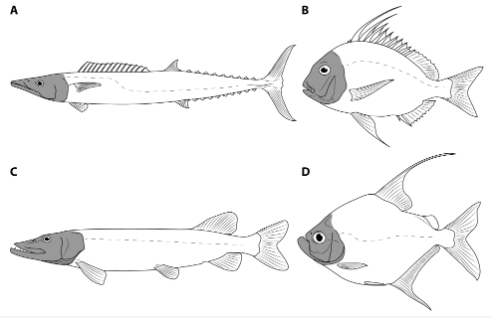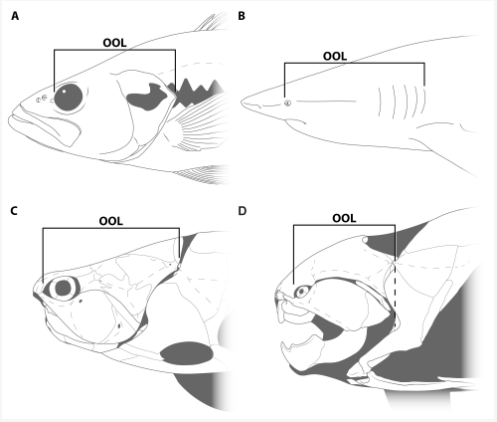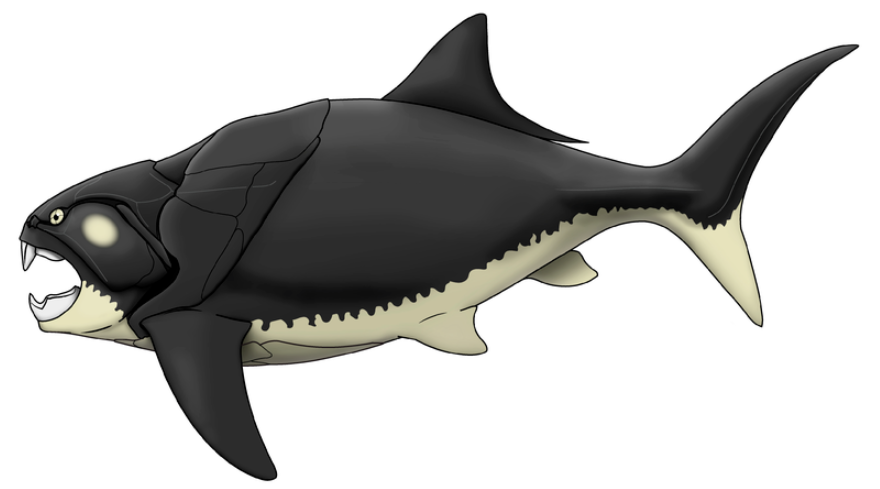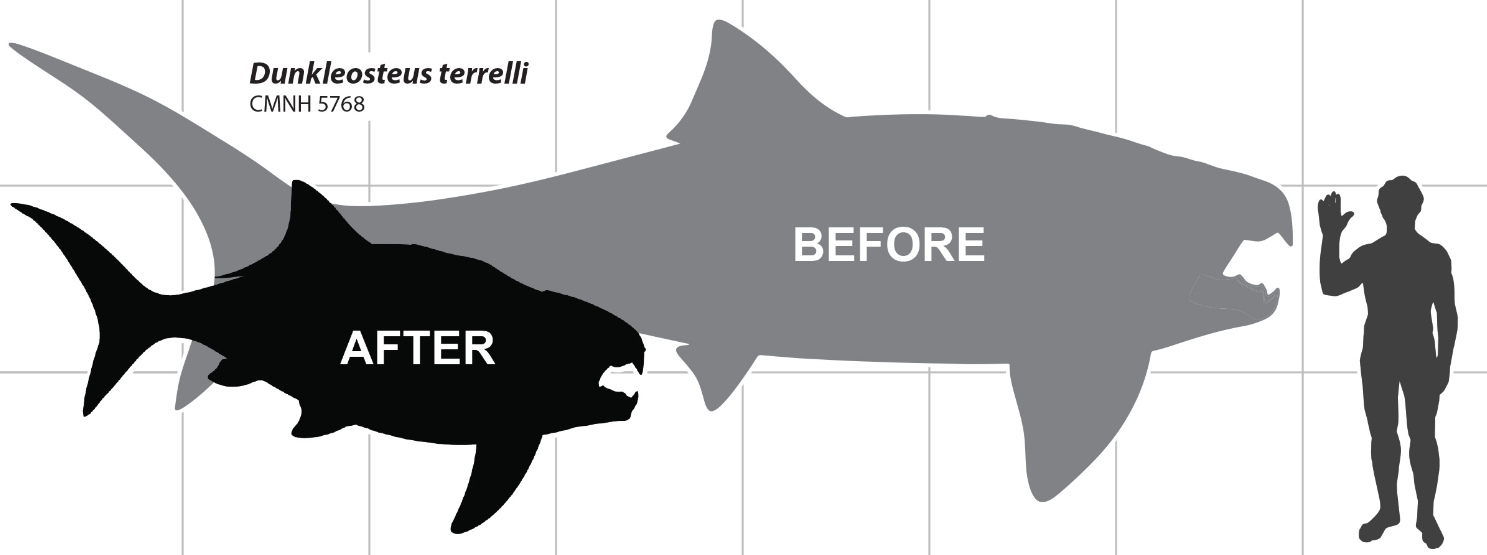A researcher from the Case Western Reserve University has come up with a new way of guestimating the size of the ferocious-looking Dunkleosteus terrelli, which roamed the Devonian seas 400 million years ago.
Dunkleosteus was thought to be one of the first vertebrate apex predators, its head and thoracic armor being regularly preserved in the fossil record. But unlike its armored head, its body was cartilaginous and not preserved, leading to guesses of total body length of anything from 5-10m (16-32’), or nearly as large as an adult male Whale Shark.


The Orbit-Opercula Length
Russell K Engelman has applied a different metric to guess Dunkleosteus’s size however, the Orbit-Opercula Length, the length from the anterior margin of the orbit to the posterior margin of the head, the OOL, or put more simply, the measurement from where the eye starts to where the tip of the gill plate finishes when a fish is viewed side-on.
Using OOL seems to check out for the head-to-body length ratio on several unrelated extant (living,) fish species as well as extinct ones, and Engelman says that fish with short, deep heads tend to have short, deep bodies, and those with elongated heads have elongate bodies, demonstrated in his paper by both fresh and saltwater fish species alive today.
So based on Engelman’s OOL ratio for Dunkleosteus, he reduces total body length from 5-10m (16-32’) right down to a much more squat and stocky 3.4m (11’) and 4.1m (13.5’) for the largest individuals, based on their fossilized heads. This reduces the arthrodire placoderm from Whale shark length to that of a modern Tiger shark, albeit with a much bigger head.

Citation
Image credit Russell K. Engelman, CC BY 4.0 https://creativecommons.org/licenses/by/4.0, via Wikimedia Commons. For more info read the full scientific paper here.



